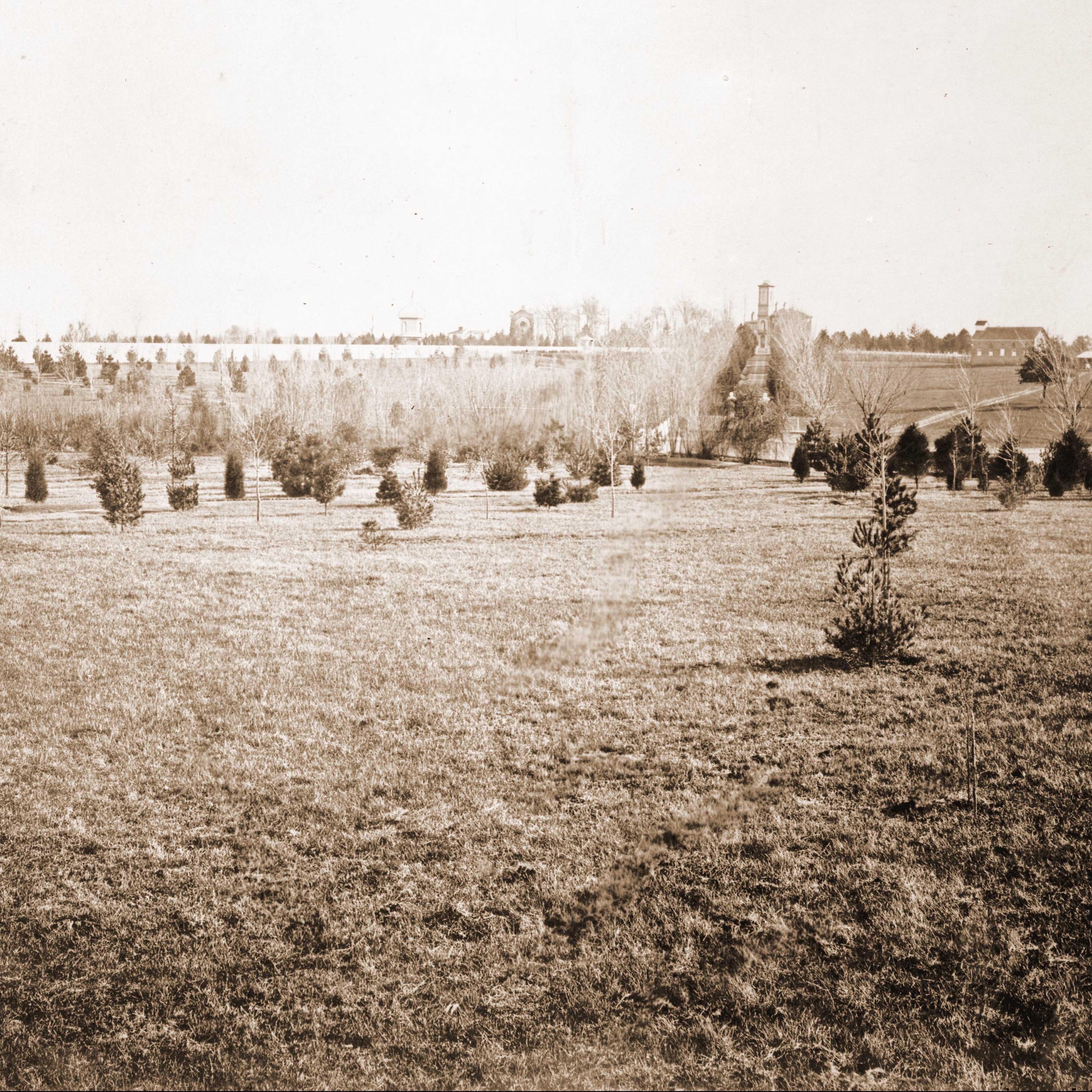The Garden is home to a number of large and impressive trees, but only a very small handful can claim to be original inhabitants. Using core samples, we have been able to identify the oldest trees at the Garden, including five individuals or collections that date back to Henry Shaw’s time.
Sassafras
The grove of sassafras (Sassafras albidum) in the mausoleum garden has been growing there since before Henry Shaw’s arrival. Sassafras spreads by root sucker, so while no individual tree in our collection is 200+ years old, the living specimens can trace their roots back to the same original genetics. These trees are the grove in the name Tower Grove.
Bald Cypress
The oldest surviving tree planted after the public opening of the Garden is a bald cypress (Taxodium distichum) near the Schoenberg Fountain in the southeast corner of the Garden. This specimen dates back to 1874. There are three more bald cypress in a service area near the main parking lot that date back to 1883. These trees were likely part of Shaw’s original arboretum, which stretched down Shaw Boulevard to Old Manchester (now Vandeventer Avenue).
Osage Orange
Two rows of osage orange (Maclura pomifera) were planted in the 1850s to line the drive leading to Tower Grove House. Today only about a dozen of these trees survive, cutting through what is now the Doris I. Schnuck Children’s Garden. The trees are known for their bright orange bark and wood, and large green fruits that drop in the fall.
Black Gum
Seiwa-en Japanese Garden has been around for 40 years, but the black gum (Nyssa sylvatica) that hangs over the lake’s southwestern edge is more than three times older. This tree was planted in 1885, in what was then known as the North American Tract.

Ginkgo
Based on core samples, the ginkgo (Ginkgo biloba) just north of the Herring House was likely planted in 1884. But it could be much older, possibly purchased by Shaw in 1861. The only surviving species of an ancient tree family, ginkgos are popular for their bright yellow fall foliage and tolerance for sometimes harsh urban conditions. These trees have been known to live more than a thousand years, and even longer in some cases.

Cassidy Moody – Digital Media Specialist







Leave a Reply